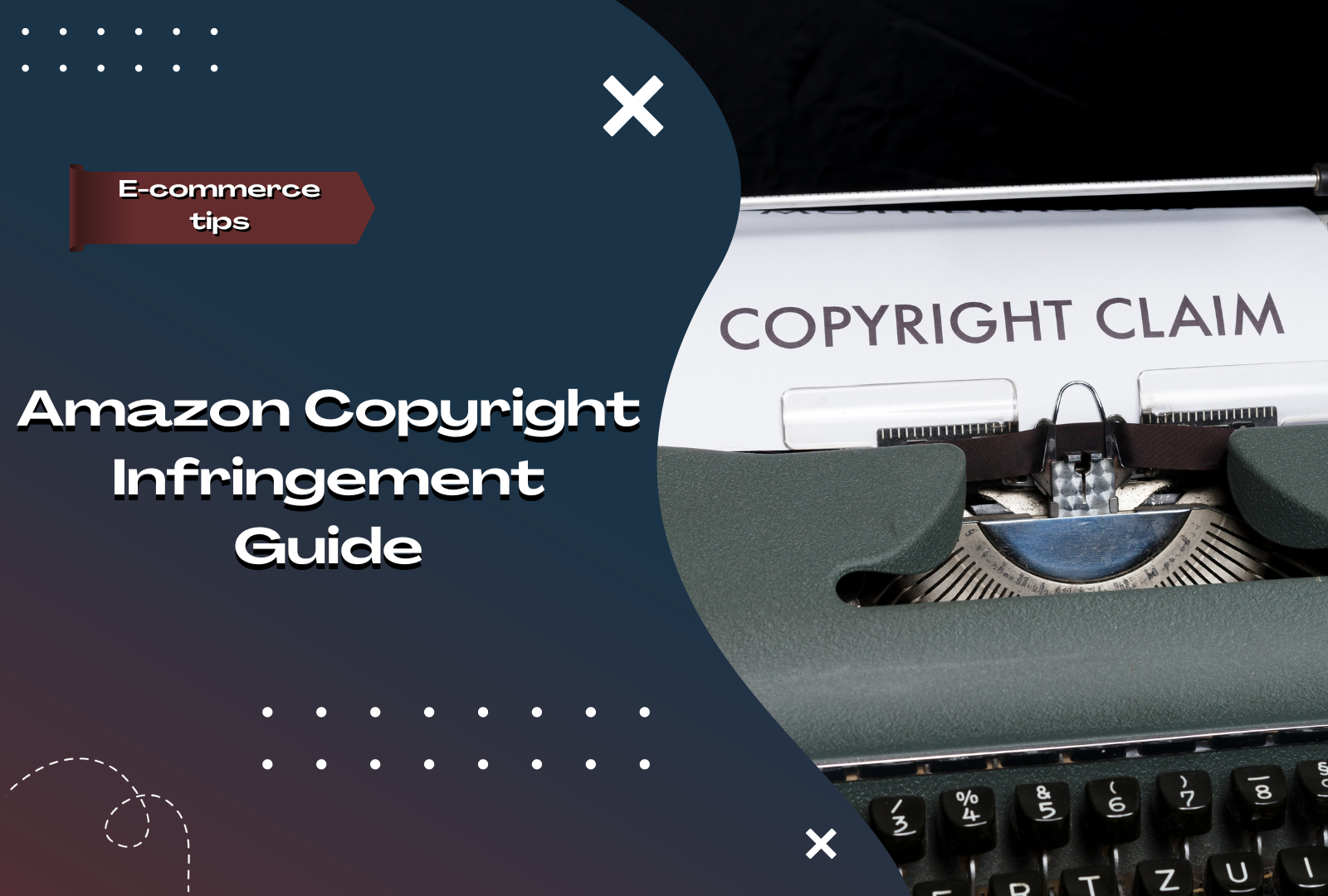Amazon Copyright Infringement Guide
As the leading e-commerce platform globally, Amazon is home to over six million third-party sellers. With the sheer number of sellers on the platform, the potential for Amazon copyright infringement is high. Fraudulent accounts steal trademarks and copyrights without the owner’s consent, directly impacting their brand’s image and value.
That’s why sellers need to be familiar with Amazon copyright infringement to protect their original works and avoid infringing on the rights of others. Let’s tackle this topic in full detail down below.
What is Amazon copyright infringement?
Amazon copyright infringement refers to the unauthorized use and distribution of copyrighted materials such as text, images, videos, and other artistic works. Copyright is a form of intellectual property that protects the original works of creators and grants them exclusive rights to distribute their materials.
Amazon takes copyright infringement seriously, and sellers who violate their policies risk facing an account suspension or a permanent ban from the platform. As a seller, you must comply with Amazon’s rules and be able to identify if unscrupulous individuals infringe on your rights. In addition, violators can also face legal action from copyright owners, as copyright infringement is punishable under the law.
What’s the scope of copyright infringement on Amazon?
Images and text are the two most common original works protected by copyright on Amazon. If a seller produces a product photo using their resources, the photo gains copyright protection. Only the seller can use the image for their product detail pages, and no other individual can use it without the owner’s permission.
For example, Kirkland takes photos of its supplements and uploads them on its product detail pages. Therefore, the brand has exclusive rights to use its original work. If a third-party seller saves Kirkland’s product images and pastes them onto their Amazon product detail page, they would violate Kirkland’s intellectual property rights.
The same thing applies to content written on product descriptions. Any text produced by a brand gains copyright protection, and sellers cannot copy/paste the texts without permission from the owner. Copying and pasting product descriptions is an immediate form of copyright infringement and literary works like books and novels.
Using original images and text when creating product descriptions is always a good idea. Not only will you benefit from copyright protection, but you’ll also minimize your risk of getting slapped with copyright claims.
How do you report copyright infringement on Amazon?
If you notice that another seller infringes your copyrights, it’s best to take action as soon as possible. Copyright infringement can negatively affect your business and hamper the value of your brand. The good news is Amazon takes swift action on copyright infringement reports, so all you need to do is submit the required details for them to respond accordingly.
Do note that if your brand is currently under the Amazon Brand Registry, you can file a copyright infringement report under the RAV section (Report a Violation). The form also applies to trademark and patent claims, as Amazon Brand Registry focuses on shielding the integrity of businesses within the platform.

When submitting a copyright infringement report, you want to include all the information Amazon requires.
- Prepare a physical or electronic signature.
- Share the description of the copyrighted work that you believe is infringed by another seller. Provide as much evidence as possible, such as identification numbers, to help Amazon process
- the report quicker.
- Share the URLs and ASINs of the products you claim are affected by copyright infringement.
- Share your contact information (i.e., phone number, address, brand name).
- Add supplementary information that shows further proof of the copyrighted material (i.e., sharing a copy of your work)
- Write a statement indicating that the copyright infringement impacts your brand and is not done in “good faith” by the seller.
The last step of the process is contacting Amazon’s copyright agent. To do so, you’ll need to send an email to copyright@amazon.com. There are a few instances where Amazon doesn’t enforce infringement under the product detail page ownership and image restrictions. When a product listing page is live, it’s permanent on amazon.com. It will remain even if your inventory depletes.
How do you appeal an Amazon copyright infringement?
Getting slapped with a copyright infringement notice is a serious matter you want to clear immediately. If you find yourself on the other end of the stick, don’t worry. Amazon allows you to appeal the notice and restore your selling rights.
If you believe you haven’t infringed on the copyright of other sellers, consider following the steps below:
- Confirm the validity of the notice. Check the copyrighted material n question and do your best to confirm it’s your original work. While you’re at it, check out the Amazon Intellectual Property Policy so you can back up your claims and determine whether or not you’ve infringed on the rights of others.
- Develop a Plan of Action (POA) on how you plan to respond to the appeal. Address the root cause and present a solution for addressing the copyright infringement notice. Remember to use professional language, as impertinent language may undermine your message.
- Review your POA carefully before sending it to Amazon. Ensure you provide evidence of your original work and share additional details, like screenshots or images of the infringing product and how it compares to your work. You can also share the listing URL or product ID to expedite the process.
- Wait for a response from Amazon. The process usually takes anywhere from 2 weeks as Amazon receives a large volume of appeals daily. If they deny your first appeal, you’ll get a second chance to revise your POA and make a stronger case for how you’ll address a problem.
If Amazon approves your appeal, you’ll regain your selling rights immediately. Note that avoiding opening another seller account to sell your products is best. Amazon does well with tracking down sellers with existing reports, and if you get caught, you risk getting banned permanently from the platform.
Wrapping up
Copyright infringement is widespread in the Amazon marketplace due to the sheer number of third-party sellers. But that doesn’t mean you should leave your brand vulnerable to misuse and distribution of your original work.
There’s a reason why Amazon created its Brand Registry program, and that is to help sellers protect their brand and scale their business to new heights. While the enrollment stage is tedious and the eligibility criteria are lengthy, the process is worth it for safeguarding your business against copyright infringement and other forms of intellectual property violations.
Hopefully, this article provides you with the information you need on Amazon copyright infringement and what to do if you face yourself with a copyright notice.
Managing the financial health of your company is crucial to its success. If you need any help with expert bookkeeping services, our team is ready to assist you. Simply fill out the form below, and our team will contact you shortly.








